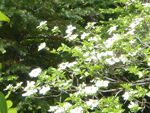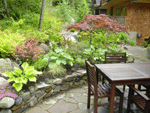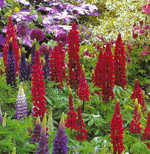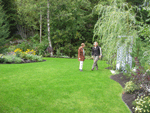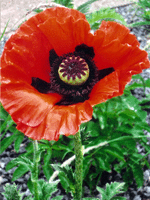
Watering Your Plants
Plant survival is directly related to the care they receive. One of the most basic concepts is adequate moisture. Without it, plants cannot survive. Water requirements for newly installed plants are fairly simple; the roots should never become waterlogged or completely dry. Different plants have different moisture requirements and it is important that you become familiar with the needs of your various plants. The crucial part of supplying adequate moisture is to compliment natural rainfall on an ongoing basis by following these guidelines:
Soil Sampling
Dig down a couple of inches just outside the root mass of the plant, and water only if the soil feels dry to the touch. Feeling the soil for moisture content is the best method for gauging dryness. Sampling can tell you accurately if the soil is too dry or wet, or adequately moist.Coral the Water
Well all newly installed plants by creating a circular berm of soil, 3-4" high around each plant. This allows for easy measurement and placement of the water at the root zone. This is especially important when planting on a slope. Build a small flat area above the plant to allow the water to reach the roots and prevent it from simply running down the slope.Keep Track of the Water Volume
Plant species have varying water requirements. Before watering, check the soil moisture and the moisture requirements of your plants.Evaluate Frequency
Newly installed plants need regular watering, usually twice a day, more if the weather is extremely hot or dry. Watering is more effective if carried out over a longer period of time than if you water frequently with small amounts, as the moisture is allowed to penetrate deep into the soil and is therefore accessible to the plant as required. Water on the surface is more prone to loss by evaporation. Regular watering should continue throughout the plants' first season. Continuing into the late fall until the ground is fully frozen will increase chances of surviving the winter.Mulch
Maintaining a layer of mulch at a depth of 3 inches greatly reduces water lost to evaporation. Mulch should be tapered to and not touching the plant base.Site Considerations
Each site is different, with varying soil type, sun and wind exposure, and topography. You must adjust your watering routine to compensate for these factors as well as the weather. Be careful not to over water.
